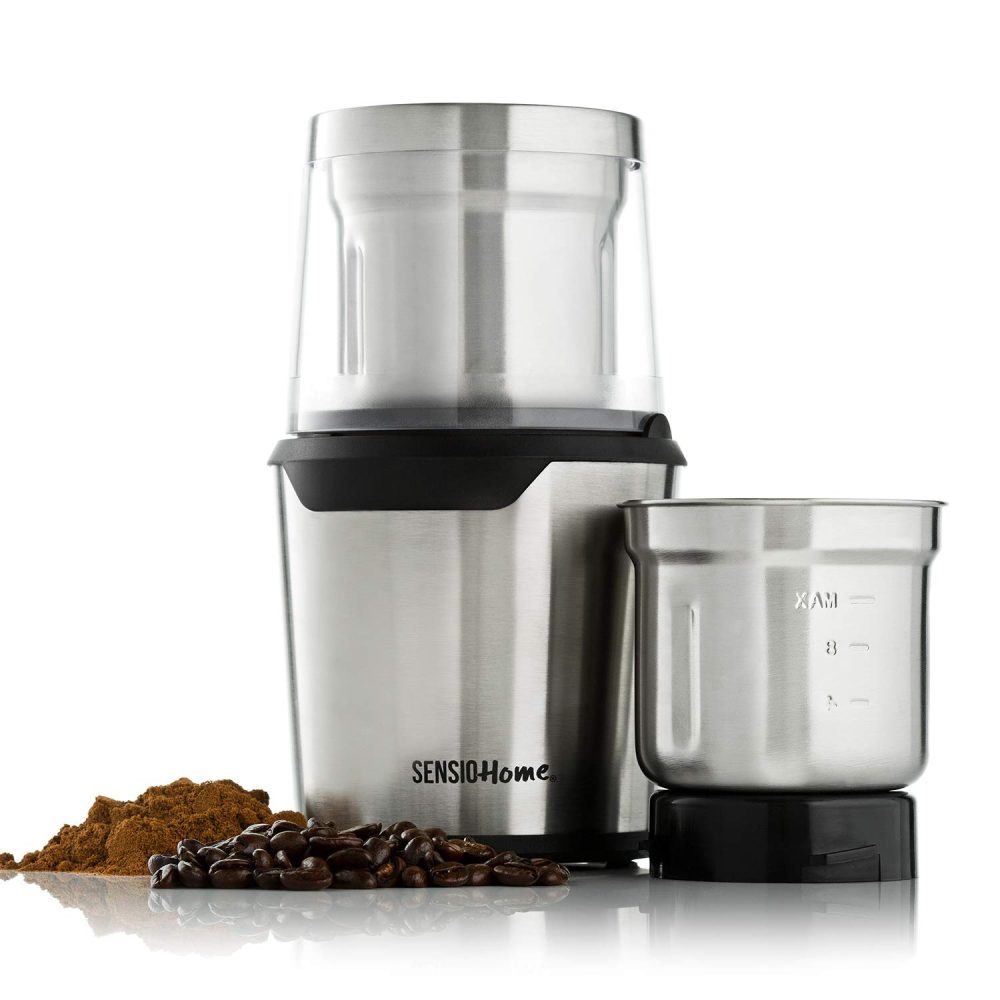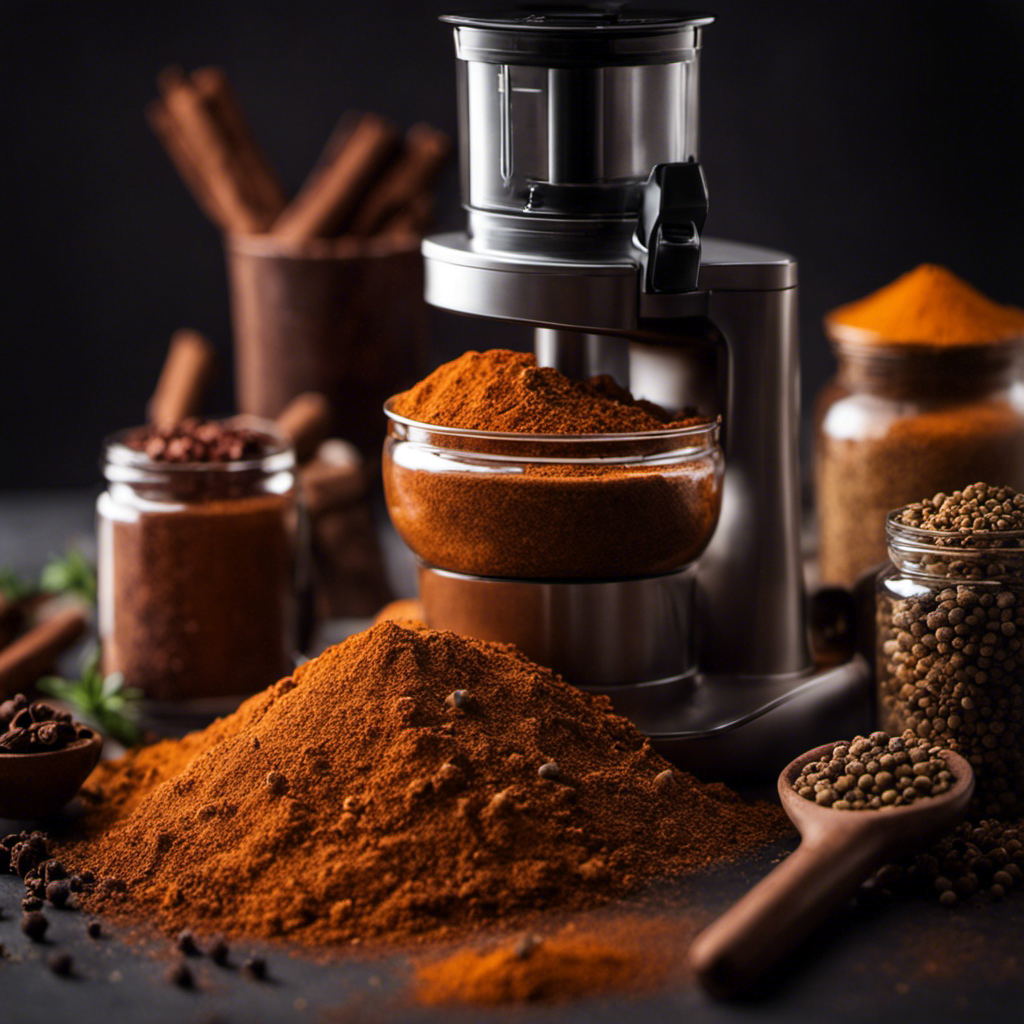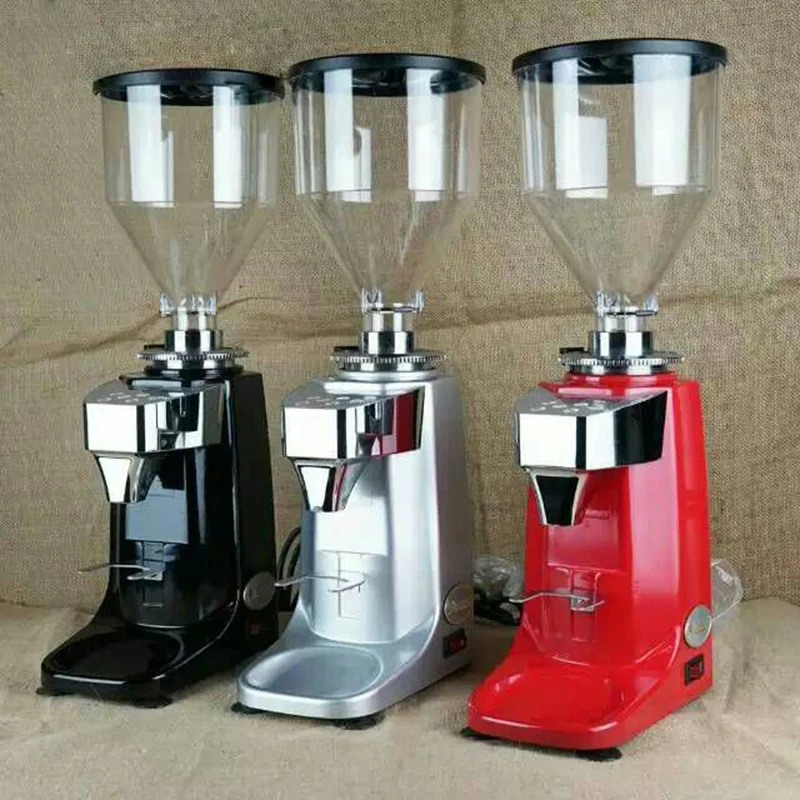
Why Consider a Food Processor for Coffee Grinding?
Using a food processor as a coffee grinder can be a smart move for several reasons. First, it could save you the expense of purchasing a separate appliance, especially if you’re not a frequent grinder. Secondly, a food processor is versatile. Beyond grinding coffee, it handles a multitude of kitchen tasks, making it a valuable tool.

If your morning routine includes brewing freshly ground coffee, versatility is important. A food processor can offer this by grinding beans to your preferred consistency, with a little know-how. Additionally, for those rare times when you come across whole beans and don’t have a grinder at hand, knowing how to use a food processor effectively can save the day.
Lastly, opting for a food processor can be a nod to sustainability. By reducing the number of appliances you own and maximizing the usage of what you have, you’re adopting a more eco-friendly approach.
While a food processor may not have the precision settings of a dedicated grinder, it still does a respectable job. It’s also about embracing the DIY spirit and enjoying the process of manual grinding. The sensory experience—listening to the beans crush and the aroma that fills the room—can make your cup of coffee even more rewarding.
So, can a food processor grind coffee? Absolutely. With the right technique, you can transform whole beans into fragrant grounds ready for brewing. It’s all about leveraging what you have to enjoy that perfect cup of coffee.
The Step-by-Step Method to Grind Coffee Beans in a Food Processor
Grinding coffee beans with a food processor is simple. Follow these steps to achieve your desired grind. Make sure the beans are at room temperature, for better results. Now, let’s get started.
- Measure Your Beans: Determine the amount of coffee you’ll need. Use the same quantity you’d typically use for brewing.
- Prepare the Food Processor: Clean the bowl to remove odors or residues. Ensure it’s thoroughly dry before use.
- Add the Coffee Beans: Pour beans into the processor, no more than half full to allow movement.
- Pulse Rather Than Grind: Use the pulse feature for short bursts. This gives you control over the grind size.
- Shake Between Pulses: Shake the processor lightly. This redistributes the beans for an even grind.
- Check the Grind: Open the processor and check the consistency. Pulse more for finer grind.
- Repeat if Necessary: If the grind isn’t fine enough, continue pulsing and shaking.
Remember, patience is key. A food processor won’t grind as evenly as a coffee grinder. But can a food processor grind coffee effectively? Yes. With attention and care, you’ll be ready to brew a flavorful cup of coffee.
Adjusting Coffee Grind Size and Consistency with a Food Processor
With a food processor, you can adjust the coffee grind to suit your brewing method. Here’s how to manipulate grind size and achieve consistency.
- Start with Short Pulses: Begin with quick pulses. This prevents the beans from heating up too quickly, which can alter the taste.
- Check Frequently: After every few pulses, stop to check the texture. This ensures you’re on track to the grind you need.
- Shake for Evenness: Give the processor a gentle shake between pulses. This helps achieve a more uniform grind throughout.
- Go Coarser or Finer: For a coarser grind, pulse fewer times. For a finer grind, increase the number of pulses.
- Avoid Overfilling: Don’t fill the processor too much. Less volume means better movement and grinding.
- Be Patient: Take your time to reach the ideal grind. Rushing may lead to inconsistent textures.
Remember, while a food processor may not grind as precisely as a specialized coffee grinder, with these tips, a satisfactory result is certainly within reach. Your ideal coffee grind contributes greatly to the taste and quality of your brewed coffee. It’s worth the effort to get it just right.
 Key Tips to Avoid Overheating Beans During Food Processor Grinding
Key Tips to Avoid Overheating Beans During Food Processor Grinding
When using a food processor to grind coffee, one must be mindful to avoid overheating the beans. Overheating can alter the beans’ delicate flavors. Here are some key tips for keeping your beans cool and your coffee flavorful:
- Pulse in Short Bursts: Use the pulse function in short intervals. This method reduces the chance of generating too much heat.
- Allow Rest Periods: Give the beans a brief rest between pulses. This prevents the buildup of heat and protects the beans’ integrity.
- Don’t Overfill: Keep bean quantity low. This ensures the beans move freely and don’t create frictional heat.
- Use Cold Beans: If possible, chill your coffee beans before grinding. Cooler beans are less likely to heat up quickly.
- Monitor Closely: Keep an eye on the texture and temperature. If the processor feels hot, pause for a moment.
- Stop When Necessary: If beans seem to heat up, stop grinding. Wait until the processor and beans cool down before continuing.
Implementing these tips can help maintain the true essence of the coffee beans. With a bit of care, even a food processor can be a coffee lover’s ally.
Alternative Grinding Methods without a Coffee Grinder
When you don’t have a coffee grinder, several alternatives can come to the rescue. These methods can help you grind your coffee beans with tools likely already in your kitchen. While they may require a bit more elbow grease, the result is freshly ground coffee that can make your brew just as delicious.
Using a Blender to Grind Coffee Beans
A common kitchen appliance, the blender, can double as a coffee grinder. Start by adding your beans to the blender. Use the pulse setting to control the grind. Pulse in short bursts and shake the blender between pulses. This ensures a more even grind. Keep checking the consistency until it meets your preference.
Mortar and Pestle: The Manual Approach
For those who appreciate the traditional touch, a mortar and pestle can grind coffee beans effectively. Place beans in the mortar and use the pestle to crush them. It takes effort but allows for custom grind size. This method keeps the beans cool, preserving the flavors.
Creative Grinding: Rolling Pins, Hammers, and More
If you’re up for a unique DIY method, you can use a rolling pin or hammer to grind beans. Put the beans in a sturdy bag and crush them using the rolling pin or hammer. This method gives you finely crushed beans for your brew. But, be careful not to turn them into powder unless that’s what you aim for.
By exploring these alternative methods, you can enjoy freshly ground coffee anytime, even without a traditional coffee grinder. Patience and creativity go a long way to ensure you can still savor a delicious cup of coffee.
The Science behind Coffee Extraction and Grind Size
Understanding the science of coffee extraction is key to brewing a great cup. It’s all about pulling flavors from beans into the water. Let’s look at the process and why grind size matters.
When you brew coffee, you extract oils, aromas, and tastes from ground beans. How fine or coarse these grounds are changes the brew’s strength and flavor. Fine grinds expose more surface area to water. This speeds up extraction but can make coffee bitter if overdone.
On the other hand, coarse grinds lead to a slower extraction. This usually means a lighter flavor and less bitterness. The size of your coffee grounds should match your brewing method. French press? Go coarse. Espresso? You’ll want it fine.
Getting the grind right is a balance. Aim for a grind that gives the water enough time to pull out the good flavors but not so long that it takes out bitterness too. Remember, with coffee, timing is everything. Grind size can make or break your brew.
A food processor can grind coffee, but not as precisely as a grinder. Still, it can give a decent grind for brewing. The key is to pulse and check often. The pulses keep the heat down and stop the beans from getting too fine or too hot.
In the end, it’s the extraction that makes your coffee special. It turns water and ground beans into the drink we love. Get the extraction right, and you’ll taste the best your coffee can offer. Aim for that perfect balance and enjoy every sip.
 Final Thoughts: Achieving Your Perfect Grind with a Food Processor
Final Thoughts: Achieving Your Perfect Grind with a Food Processor
As a coffee aficionado, the quest for the perfect grind is a crucial part of the brewing journey. While a food processor is not tailored for coffee, it can still deliver a satisfactory grind for your beans. The key lies in mastering the technique and being mindful of the grind size and consistency.
To recap, start with clean, dry equipment and use quick pulses to protect the beans from heat. Shake the processor to ensure even grinding and stop to check the texture often. Go easy with the beans, as smaller batches grind better.
A food processor won’t mimic the precision of a burr grinder. But with patience, you can get a grind that brings out the full flavor of your beans. It’s perfect for times when a specialized grinder is out of reach. Plus, it’s a more sustainable, all-in-one kitchen tool.
Remember, the grind affects the extraction and taste of your coffee. Use the tips shared here to adjust grind size for different brew methods. With practice, a food processor can help you achieve your perfect grind. Embrace this DIY spirit, and enjoy your handcrafted brew. Your morning coffee ritual will thank you for it.
In the end, whether you choose a food processor, a burr grinder, or alternative methods like a blender or mortar and pestle, the goal remains the same. Aim for that perfect grind that makes each cup a delightful experience. And keep exploring, as every method brings its unique touch to your coffee.





